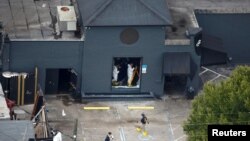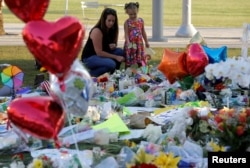In the wake of the Orlando mass shooting, the second deadliest act of terrorism in U.S. history, "soft target" attacks on places like the Florida nightclub where 49 people lost their lives Sunday may be a "new normal," according to an expert with a private strategic intelligence firm.
Omar Mateen, the 29-year-old who opened fire at the gay nightclub Pulse, appeared to have had limited ties to Islamic State (IS), said Scott Stewart, a counterterrorism expert at Austin, Texas-based Stratfor, in an interview with VOA.
The shooting, he added, seemed to fit into the terrorist group's larger strategy of encouraging "lone wolf" attacks for which it can claim responsibility after the fact.According to Stewart, the Orlando attack —that also left 53 people wounded — is a classic example of remote radicalization that has turned the face of terrorism into the new so-called leaderless resistance with reduced risk.
There are few, if any, warning signs: no command structure, no communication system, no secret plan or formal organization. Symbolic figures can encourage attacks without ordering them, protecting themselves from prosecution and making surveillance useless, said Stewart.
He said "we've seen several of these before" in Chattanooga, New York; Little Rock, Arkansas; Fort Hood,Texas; San Bernardino, California.
"And this is really our new normal in the United States," he added. "We are going to have these sorts of attacks against soft targets because most of these grassroots jihadists, whether they are individuals or operating in small cells, just don't have the professional trade craft to attack hard targets like before."
Remote radicalization exploits the growing global interconnectivity, its ability to move money, share information, and manipulate modern technology.
That, said Stewart, creates surveillance hurdles for security agencies forced to track ever-larger groups of possible plotters.
"The potential universe is so broad under this new leaderless resistance model. [The U.S. government] just can't cover everyone 24/7," he said. "It takes a lot of resources to monitor someone's activities all the time. When you look at it across the country, the FBI nationally has maybe 10,000, 11,000 agents, and that's not too many."
The FBI is equally impeded by time constraints, Stewart pointed out.
"They will open an initial inquiry into a subject and then they have a certain time period in order to ascertain whether or not criminal behavior is happening," he said. "If they don't find any evidence of criminal activity, then they basically have to close the investigation. That appears to have happened here [with Omar Mateen]."
"The U.S. counterterrorism model, targeting hierarchy groups, has been effectively executed against al-Qaida, the perpetrator of the 9/11 attacks. Stewart, however, admitted the model has become a victim of its own success.
"That's why we haven't seen al-Qaida launch attacks inside the United States in the post-9/11 world despite repeated threats they were going to do something bigger than 9/11," he said. "And that's specifically why the jihadists began promoting the idea of leaderless resistance."
Stratfor's analyst echoes many other anti-terrorism experts who say the solution perhaps lies in a cooperative effort between security agencies and the public, where citizens, if they see signs of terrorism, report it to local and state law enforcement.










